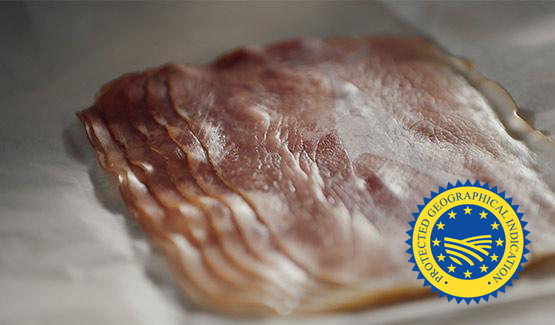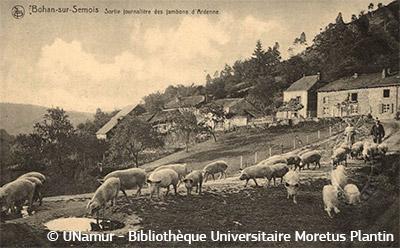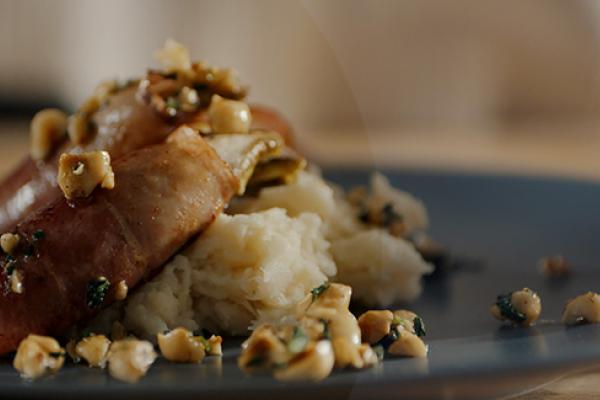
The natural environment of the Ardennes is key to producing Belgium’s Jambon d’Ardenne PGI, giving this dry ham its highly typical and flavoursome character. This local delicacy has inherited a well-deserved reputation from days gone by in the Ardennes.
It has also long been one of the highlights of the regional products and specialties featured on local menus.
Origins
Belgium’s Jambon d’Ardenne PGI (Ardennes ham) takes its name from the forested highland situated in the south and southeast of Wallonia. This open expanse of rolling hills with its lush backdrop, caves and small gorges carries the natural conditions that give this traditionally-sourced dry ham its highly typical characteristics.
The distinctive microclimate of the Ardennes and the maturing and drying processes of the green (uncured) ham are closely linked, giving Jambon d’Ardenne PGI its very own flavour and texture, just as nature intended. Produced in Belgium’s Luxembourg Province or in certain districts bordering the provinces of Liège and Namur, this local delicacy has inherited a well-deserved reputation from days gone by in the Ardennes. Recognised by the protected geographical indications (PGI) designation in 1996, Jambon d’Ardenne PGI is one of the highlights of the regional products and specialties on today’s local menus.
At a time when pigs were bred to provide the only source of meat, curing presented a solution to preserve food, before modern refrigeration facilities were invented. The pork leg cut, known as ham, was always considered the best part, and became a treat associated with local festivities. Records from the beginning of the 19th Century reveal that ham was served to travellers all over the Ardennes. Public and private collections of menus would usually mention Jambon d’Ardenne.
Production
The quality and typical characteristics of Jambon d’Ardenne PGI are now protected to avoid imitation and preserve its quality. This was first achieved at a national level by the Belgian Royal Decree of 1974, which states that the ham must be salted, matured and smoked (if so decided) in the Ardennes as per the traditional method, relying on natural conditions and know-how.
The process for making Jambon d’Ardenne PGI starts with the curing of a pig's hind leg by dry salting, rubbing with salt or immersion in salt water. This is followed by maturing in cold storage. Hams absorb surrounding odours and develop their characteristic flavour and aroma. Although optional, the smoking stage requires wood or sawdust, excluding that produced from coniferous trees and recycled wood. The aging phase and the minimum production time depend on the type of product: Ardennes ham on the bone, Ardennes centre cut ham known as "coeur", or Ardennes nut ham known as "noix". In the end, the hams must meet a series of physical, chemical and bacteriological standards.
The seasonal interactions between temperature, humidity and circulation of fresh, humid air create the harmonious combination for maturing and drying. The natural environment of the Ardennes is key to ambient curing in the region. The art of producing the ham has thus been adapted to these natural conditions over time to make Jambon d’Ardenne PGI.
More information
Jambon d’Ardenne PGI – legal specifications




